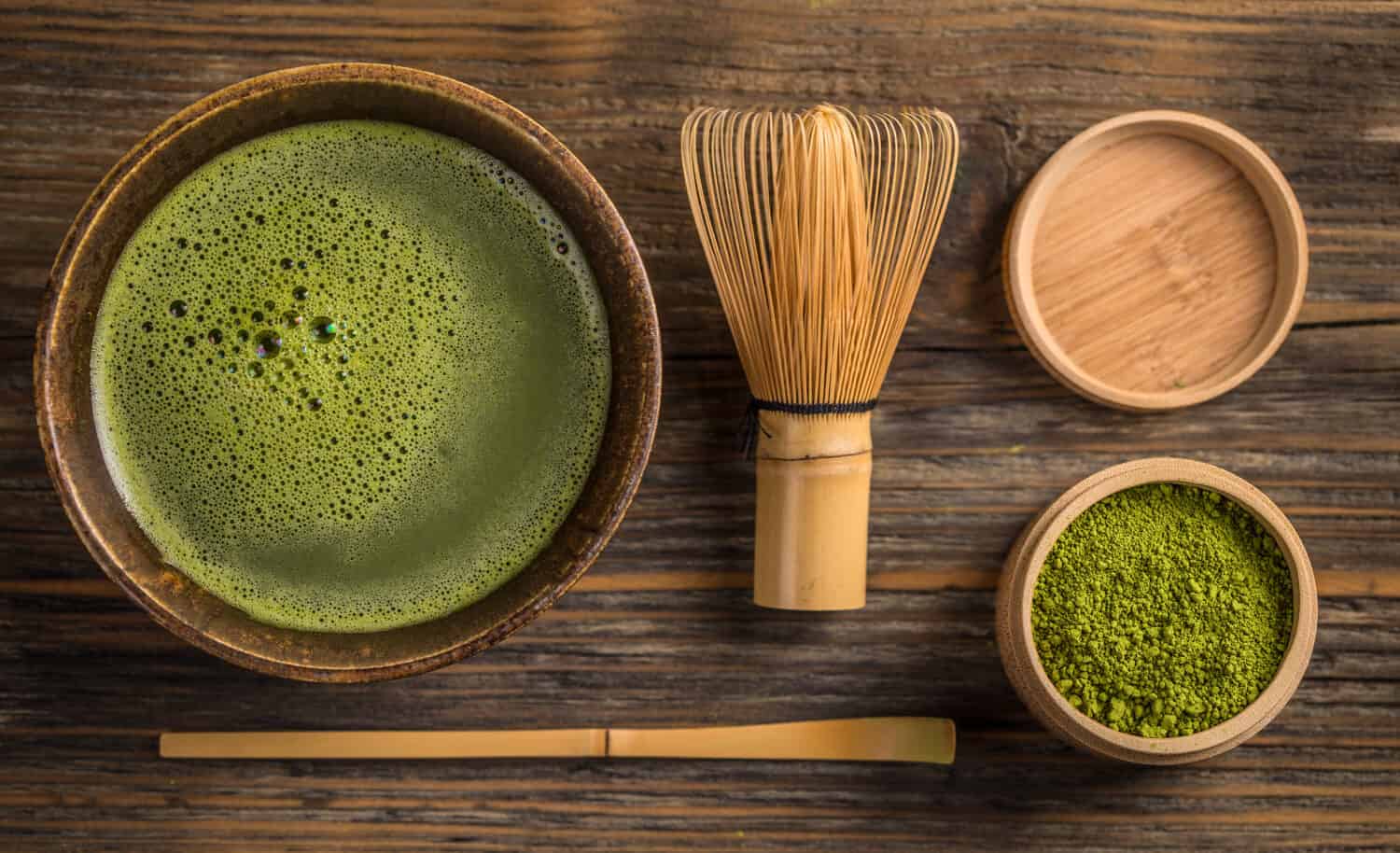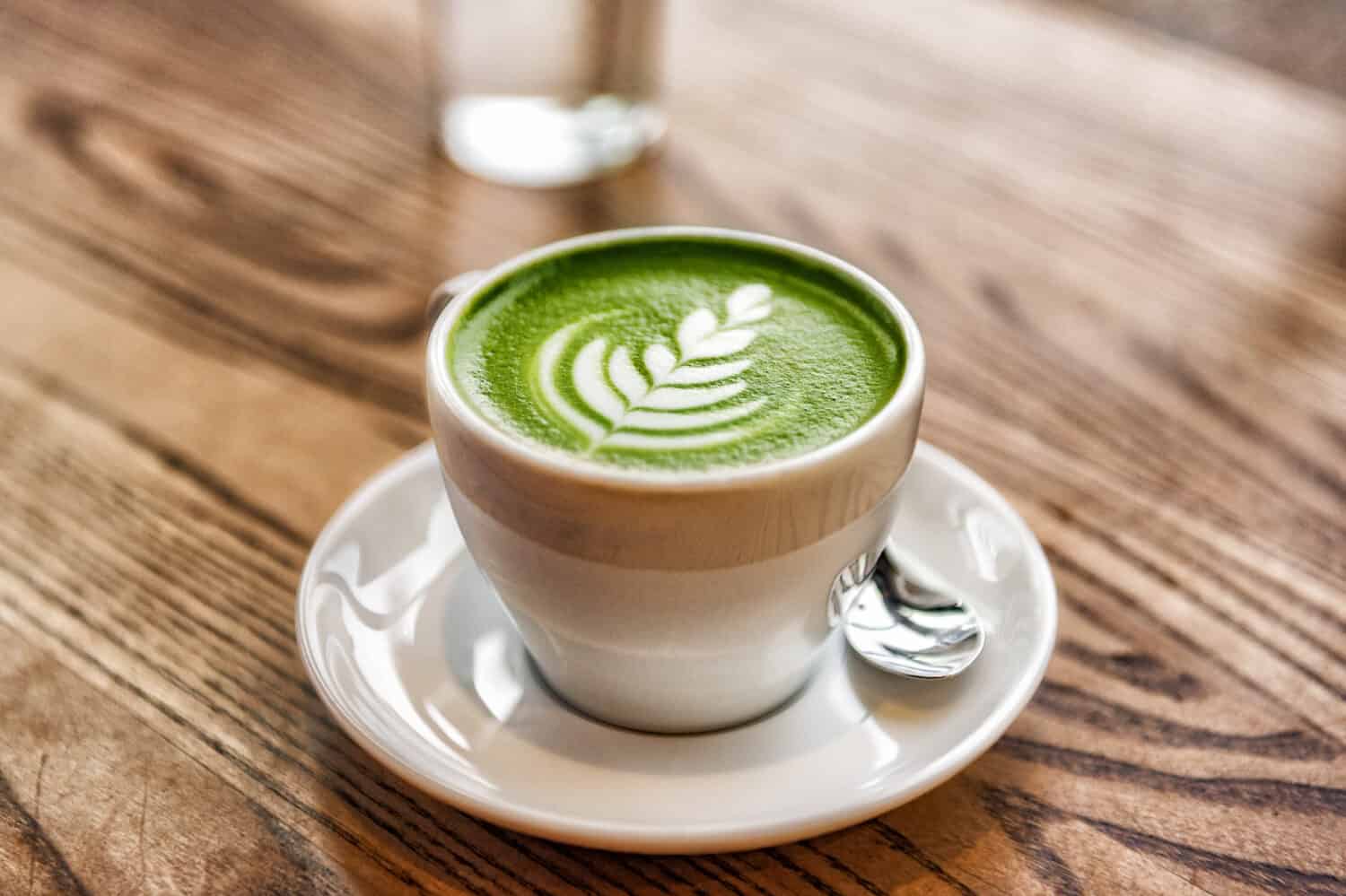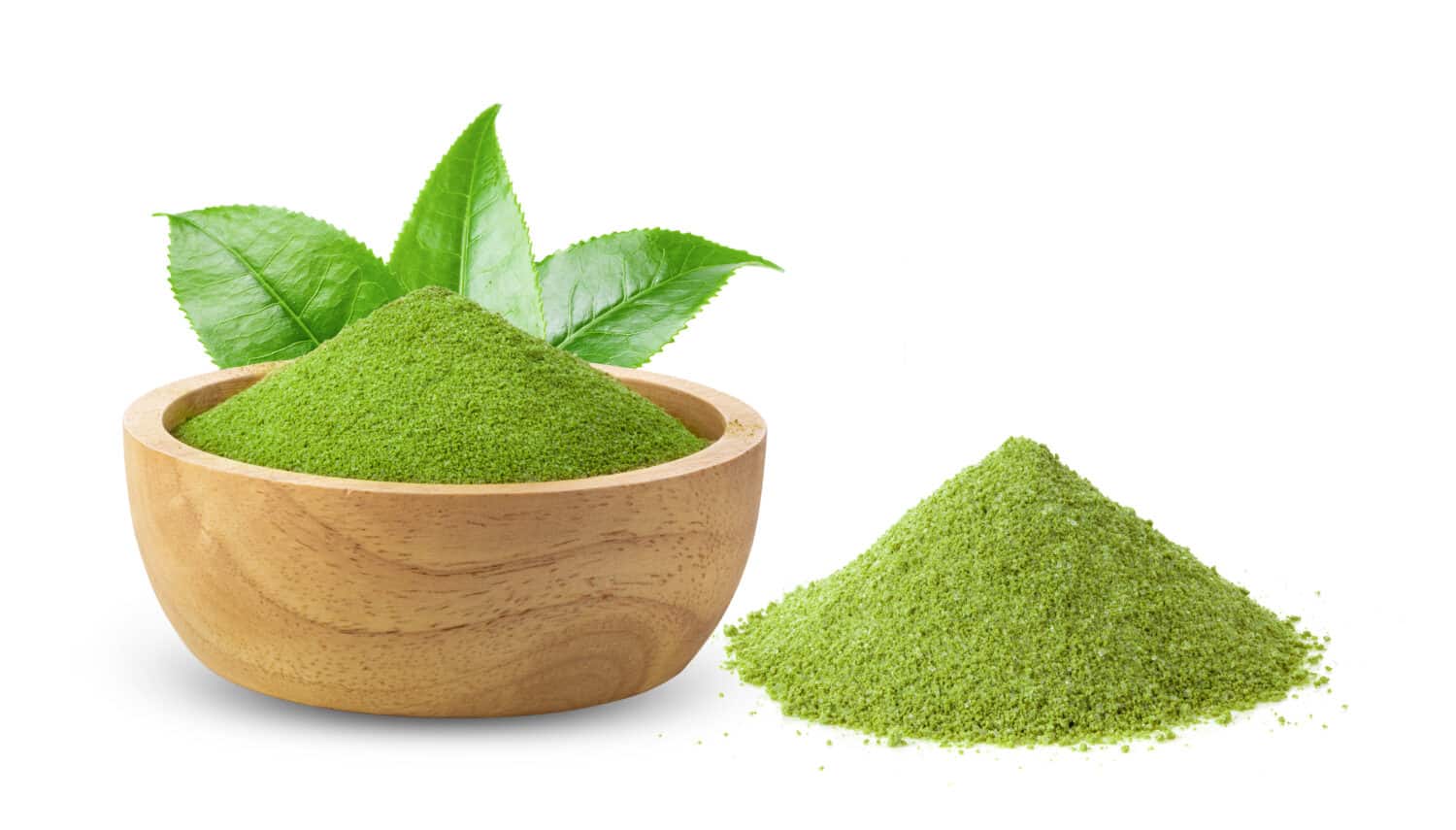Kermit the Frog famously sang, “It’s not easy being green,” but matcha sings a different tune. You’ve likely spotted this beautifully hued form of green tea in lattes and other café offerings for years. But what is it, and is matcha healthy for us? It might surprise you to learn that the answer appears to be a resounding yes! Matcha boasts an overwhelmingly high number of potential health benefits, from reducing arthritis and aiding in weight loss to delivering antioxidants that could aid in cancer prevention. We’re breaking down the science to learn more.

©grafvision/Shutterstock.com
What is Matcha, and Where Does it Come From?
In a nutshell, matcha is a specially grown green tea (it’s shaded for two to four weeks prior to harvest so it can ruminate in near darkness) that has been used in culinary and medicinal efforts for centuries — particularly in East Asia, which is mostly where it is grown. In fact, Japan is the current highest producer of matcha. (The indisputable matcha capital is Uji, which is south of Kyoto.) High-grade and highly concentrated, the matcha is ground down into a fine powder that winds up being significantly stronger than typical green tea.
What Does Matcha Taste Like?
If you’ve ever had matcha, you may have noticed that it possesses a unique earthy, grassy smell and taste. It’s actually quite complex. This is because you’re consuming the entire, de-stemmed, and deveined tea leaf! Many people describe matcha as being creamier than standard green tea, particularly as it is often whisked into steamed milk. It can also have a bitter element as well as “umami” (a more savory flavor profile) and even a sweetness or nuttiness.
Matcha is delicious, whether mixed into beverages or food. Some of the common ways to include matcha are sprinkled onto oats or granola, blended into yogurt or smoothies, and even infused into desserts — from panna cotta or tiramisu to ice cream or cheesecake.

©Nina Firsova/Shutterstock.com
Matcha vs. Green Tea: What are the Similarities and Differences?
First things first. Despite a few significant similarities — such as both originating from the Camellia sinensis plant — matcha and green tea offer different flavor profiles and varying health benefits. They even come from different regions of East Asia, as up to 80% of the world’s green tea growth is done in China, while the majority of matcha comes from Japan.
Additionally, they are grown through different cultivation and preparation methods.
Flavor
From a consumption standpoint, matcha offers a bolder, more intense flavor, whereas green tea tends to offer a lighter, more delicate one. They are both often described as earthy or grassy. They have also been known to be described as “vegetable-like.” Some people compare the taste of matcha to spinach! With that said, green tea tends to be accompanied by notes of other floral or fruit flavors, such as jasmine, ginger, honey, or citrus. Green tea also tends to be less bitter than matcha. This is largely due to its growth and production processes.
Cultivation
Green tea is derived from tea leaves that are grown in the sun and then run through processes such as pan-firing, basket-firing, oven-drying, or steaming.
Alternately, matcha experiences shade growth during its final weeks of harvesting. This shade amps up the tea leaf chlorophyll levels. The leaves are also de-stemmed, deveined, and steamed to stop further oxidation, which is what gives matcha its beautiful, dark green color.
Because matcha is made from the entire tea leaf and shade-grown, its nutrients are more plentiful — it typically contains a higher number of antioxidants, as well as more caffeine than standard green tea.
Preparation
The preparations of green tea and matcha tend to differ greatly. Leaning on the assistance of accessories, matcha is most often prepared by mixing the powder with hot water or steamed milk, then blending well with a bamboo whisk. On the other hand, green tea is steeped traditionally through tea bags or loose-leaf tea and water that is just shy of boiling.
Medicinal Properties
For thousands of years, traditional East Asian healing methods have included both matcha and green tea. In fact, it isn’t uncommon to find them in cleanses and detoxes. However, matcha’s nutrient concentration makes it a stronger and more effective choice. When green tea is steeped, its nutrients infuse the hot water. But once the tea bag or leaves are removed from the water, some of those nutrients are also removed. Comparatively speaking, matcha’s nutrients remain because it’s the entire tea leaf that has been ground into the powder.

©Maridav/Shutterstock.com
What are the Health Benefits of Matcha?
Antioxidants protect your cells from damage, and matcha is high in catechins — much more than your average green tea. This translates to a lowered chance of heart attacks, stroke, and heart disease. And the health benefits don’t end there. Studies also show that, aside from boosting your heart health, matcha can assist in weight loss, reduce inflammation caused by arthritis, and even help protect your liver.
Perhaps even more surprising, recent studies show a link between matcha and cancer prevention. Though more research is needed for uncontested proof, stomach and prostate cancer are two of the study focuses that have produced effective results.
Your dentist just might wind up being fond of the matcha craze, too. The presence of fluoride in matcha can help maintain your teeth. “Matcha tea, irrespective of the harvest date or brewing temperature, is a major source of fluoride in the human diet,” says one study in the National Library of Medicine. The article goes on to state, “One liter of this beverage can contain approximately 4 mg of fluoride, providing the total daily requirement for this mineral.”
What are the Health Detriments of Matcha?
While one of the more obvious side benefits of matcha might be its ability to deliver a dose of caffeine, this can be a detriment if over-consumed. As with most caffeinated products, too much matcha can lead to overstimulation. This can result in a surge in nervousness and anxiety, as well as a disrupted sleep cycle.
Rich in fiber, it’s also worth noting that too much matcha can cause stomach upset and/or dehydration.
Important Takeaways
With all of the ongoing scientific research, the jury is still out on some of the benefits of matcha. However, we think it's fair to say there appear to be far more benefits than drawbacks. Here are a few of the important takeaways when it comes to matcha:
- Matcha offers more nutrients than traditional green tea. This is because matcha powder encompasses whole tea leaves that have been deveined and de-stemmed, then ground down into powder form.
- Matcha and green tea come from the same plant. However, they differ in flavor profile, how they are cultivated, and the benefits they offer.
- Matcha is used in a number of delicious foods and beverages, including lattes, smoothies, desserts, and breakfast items.
- Matcha is high in antioxidants, offering a link between matcha and cancer prevention. It is also linked to the reduction of inflammation, a boost in heart health, weight loss, and many other benefits.
- Matcha contains fluoride, which assists in dental care.
- Matcha contains more caffeine than traditional green tea. It offers a notable dose of caffeine, which can support focus and staying awake when needed.
- Excessive consumption of matcha can lead to jitters, anxiety, dehydration, stomach upset, and a lack of sleep.
Up Next:
- Coffee vs. Tea: Which is Healthier? Full Comparison of Caffeine, Calories & More
- 7 Decadent Latte Recipes
- Rolled Oats vs. Old-Fashioned Oats: 3 Key Differences
The image featured at the top of this post is ©pukao/Shutterstock.com.
